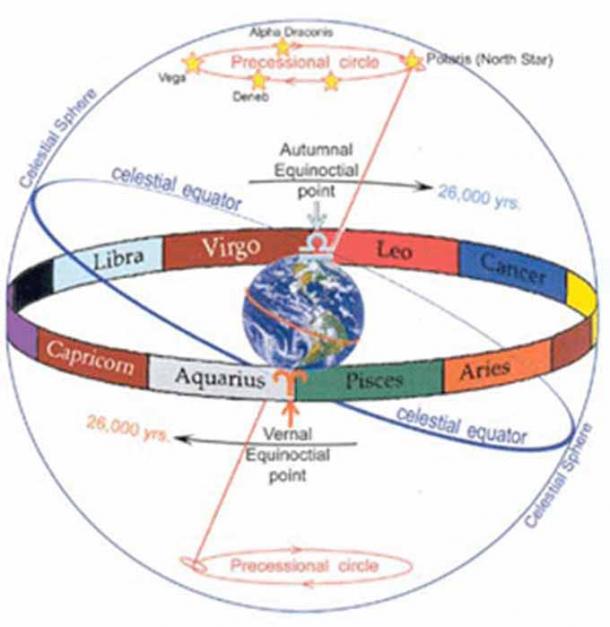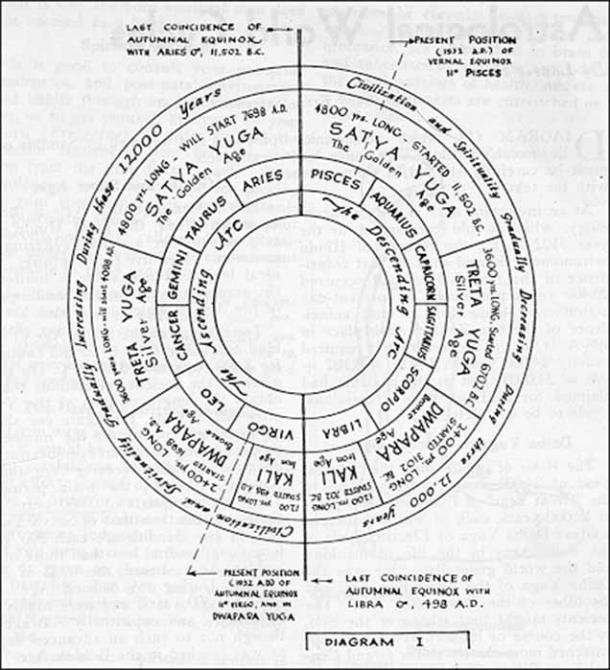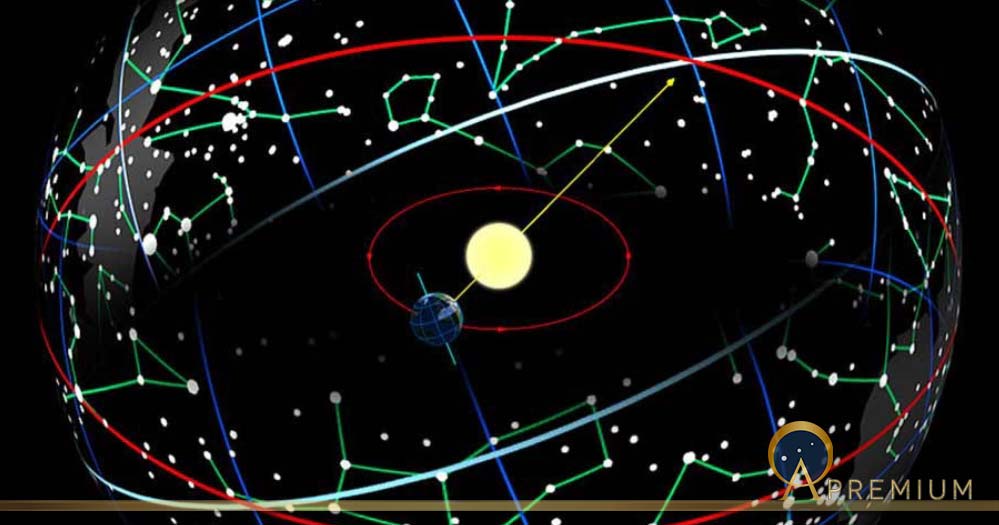The Dynamic Dance Of The Earth, Solar System, And Precession
Long before the dark ages, history recalls the myth and folklore of a higher age. Hesiod, the famed Greek historian (circa 700 BC), tells it was a time of peace and plenty when mankind lived in tune with earth, and “ she gave of herself freely”. He lamented that Greece of his time experienced a period of decline, suggesting a cycle of ages with ascending and descending phases that moved like the seasons, albeit on a much longer scale. The Greeks called their lowest age the Iron Age, or Age of Man, next was the Bronze Age, known as the Age of the Hero, then came the Silver Age, Age of the Demigods, and finally the Golden Age, or Age of the Gods. Plato (circa 400 BC) referred to this cycle as the “Great Year”, a period of time equal to one Precession of the Equinox, about 25,000 years.

The precession of the equinox around the constellation of Draco takes nearly 26,000 years to complete. This period is known as a Great Year. This precessional 'wobble' moves the 'vernal point' through each constellation of the zodiac, one by one. (Image: Courtesy Ralph Ellis)
The Vedic Indians held the same belief and called it the Yuga Cycle, also breaking it into ascending and descending halves with four ages each. They called their lowest the Kali Yuga. Next was their Dwapara Yuga or Age of Energy, then the Treta Yuga, the Age of Mental Powers and Telepathy. Their Golden Age, Satya Yuga, was said to be a time of unimaginable virtue and beauty. Manu, the great legislator dating to prehistory, said the cycle was about 24,000 years, a time very close to Plato’s estimate.

Yuga Cycle with Equinoctial Points - Sri Yukteswar (Image: Provided by the author)
Modern scholars recognize that many great ancient civilizations declined into a dark age near the low point in the chart above. Yet, there are no obvious phenomena that would cause a pattern of cycles. Historians today believe that pre-dark age cultures were the victims of their own poor decisions, disease and economic setbacks, unrelated to any cycle.
Natural Cycles of Celestial Motion
There are natural cycles that affect consciousness and behavior on a mass scale, but they are so obvious one hardly thinks about them. The first is the earth’s rotation.
Like this Preview and want to read on? You can! JOIN US THERE ( with easy, instant access ) and see what you’re missing!! All Premium articles are available in full, with immediate access.
For the price of a cup of coffee, you get this and all the other great benefits at Ancient Origins Premium. And - each time you support AO Premium, you support independent thought and writing.
Walter Cruttenden is a writer on the topics of history and astronomy, including his books Lost Star of Myth and Time, The Great Year Adventures with Tommy the Time-Traveling Turtle, and the documentary, The Great Year, narrated by James Earl Jones. Walter now runs the Binary Research Institute (a non-profit), Lost Star Productions (a for profit media company), and regularly hosts the Conference on Precession and Ancient Knowledge and The Cosmic Influence podcast.
Top Image: The Earth in its orbit around the Sun causes the Sun to appear on the celestial sphere moving along the ecliptic (red), which is tilted 23.44° with respect to the celestial equator (blue-white). (Tauʻolunga/ CC BY-SA 3.0)

















